Skulls can tell you a lot about an animal’s diet and lifestyle. They can be found in roadside ditches, on open hills, on spoil heaps outside badger setts – in fact, virtually anywhere.
Start the detective process with size. Vole, shrew and mouse skulls are the size of an adult thumbnail, those of rats and moles are half as long as an index finger, rabbit and squirrel skulls are the length of a thumb, and badger and fox skulls are the size of one or two clenched fists.
Any bigger and you probably have a deer, sheep, cow or horse skull. Next look at the teeth – carnivores have pointed teeth with no gaps; herbivores have ridged grinding surfaces on their teeth and a long, toothless gap between the cheek teeth and the front of the jaw.
How to clean animal skulls
Clean skulls by leaving them outside under a flowerpot with a gap for beetles to crawl inside.
Whiten skulls with hydrogen peroxide diluted several times, not with bleach.
To keep a collection in good condition you should lightly boil them with a dash of sodium perborate, which will act as a bleach.
How to identify common mammal skulls found in the UK
Hedgehog skulls
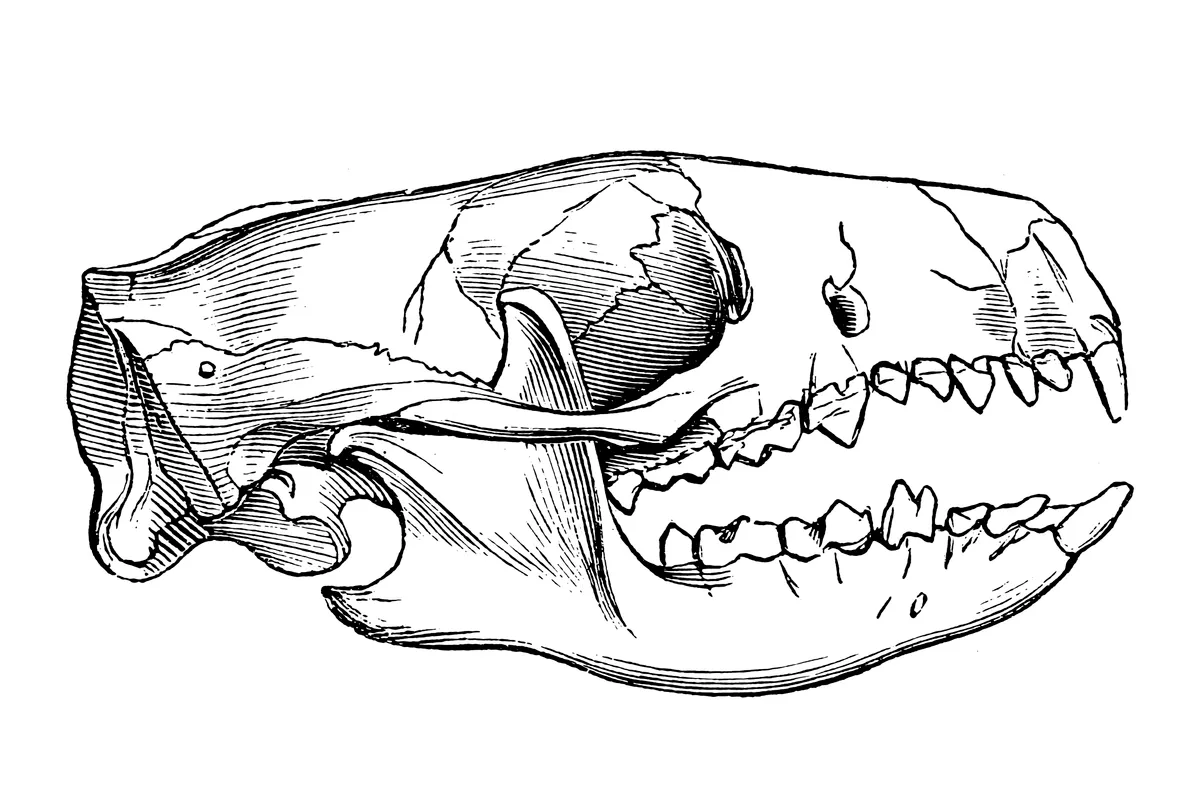
Hedgehog skulls are easily recognised by a row of sharp teeth that are all rather similar, and remains of spines are often found with the hedgehog skull.
Rodent skulls
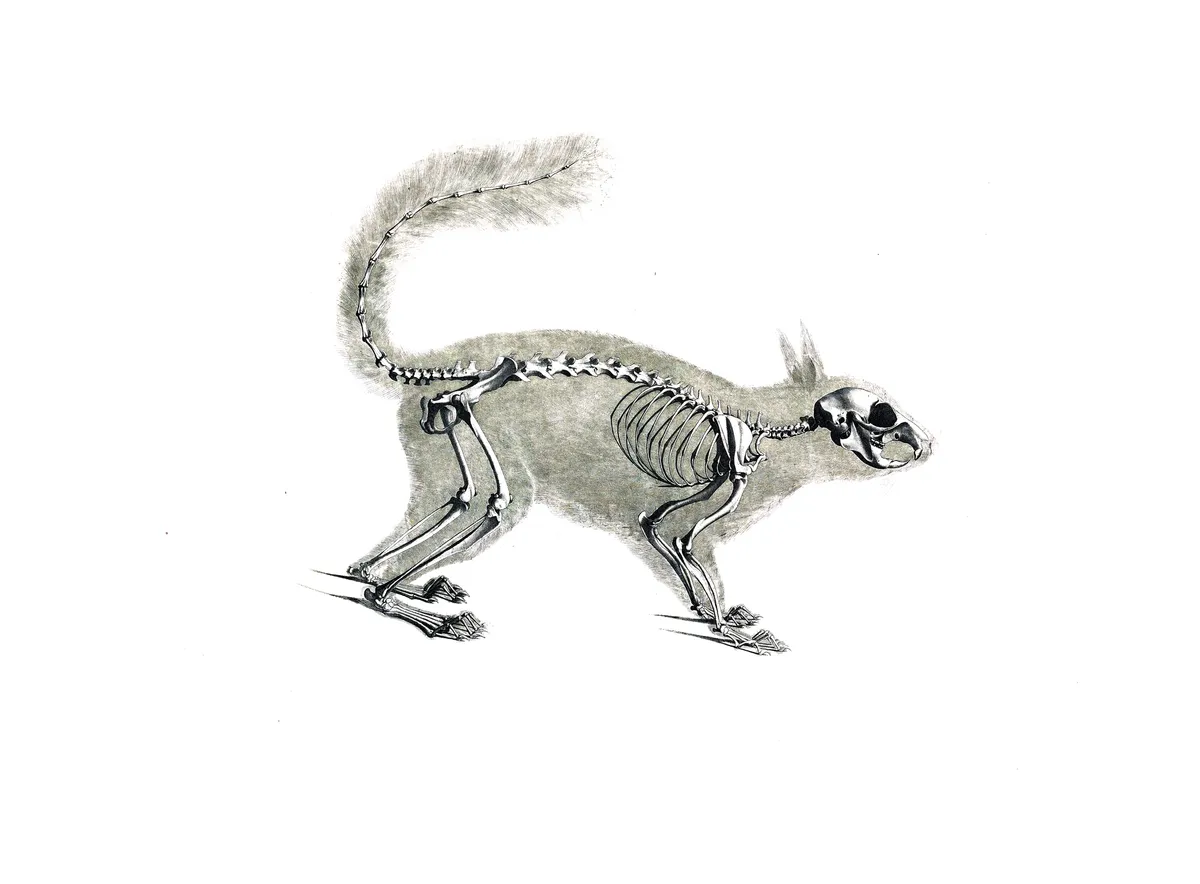
Rodents have one pair of incisors in the upper and lower jaw, and then a gap before the flat, grinding cheek teeth.
Squirrel skulls are easily told from rat skulls by the broader snout.
Mole skulls
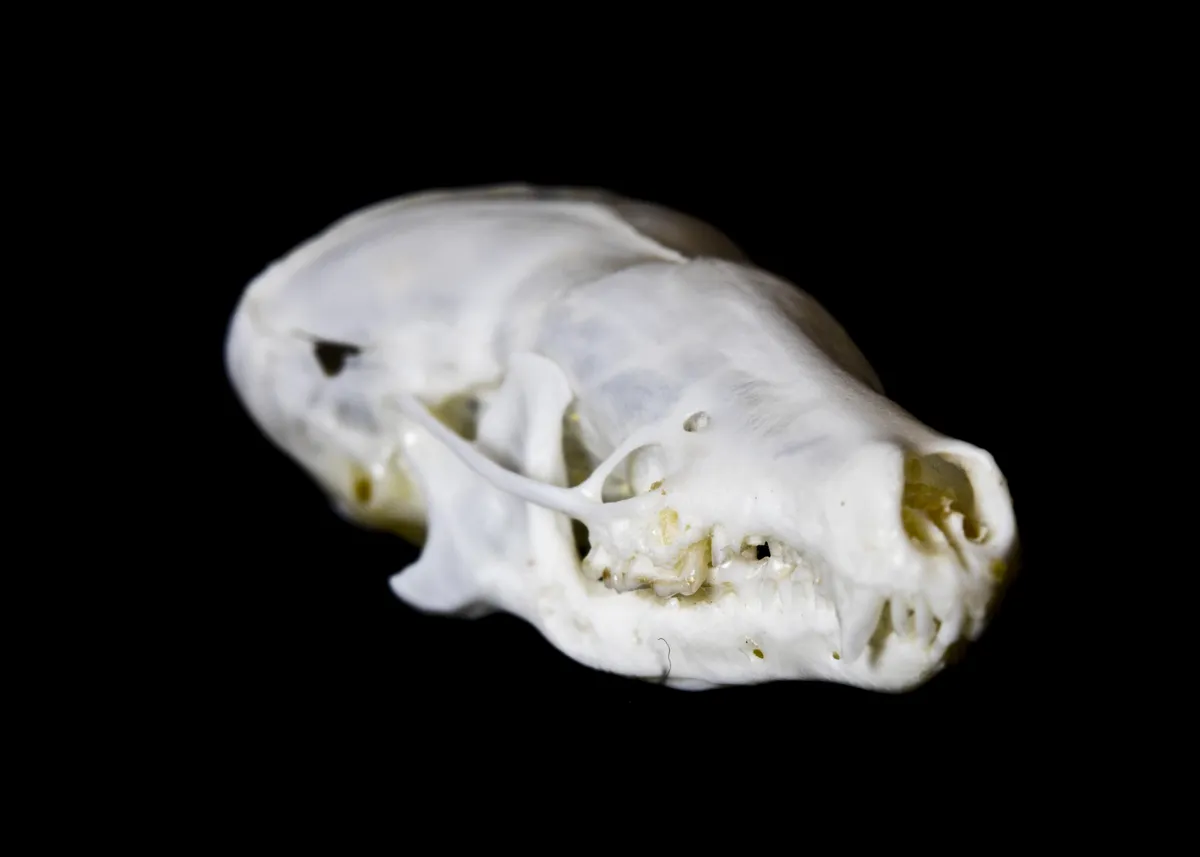
This is a very elongated skull about 30mm long. It features tiny incisors in both jaws, with no gap behind. You’ll see other teeth are small, pointed and tightly packed.
Small carnivore skulls
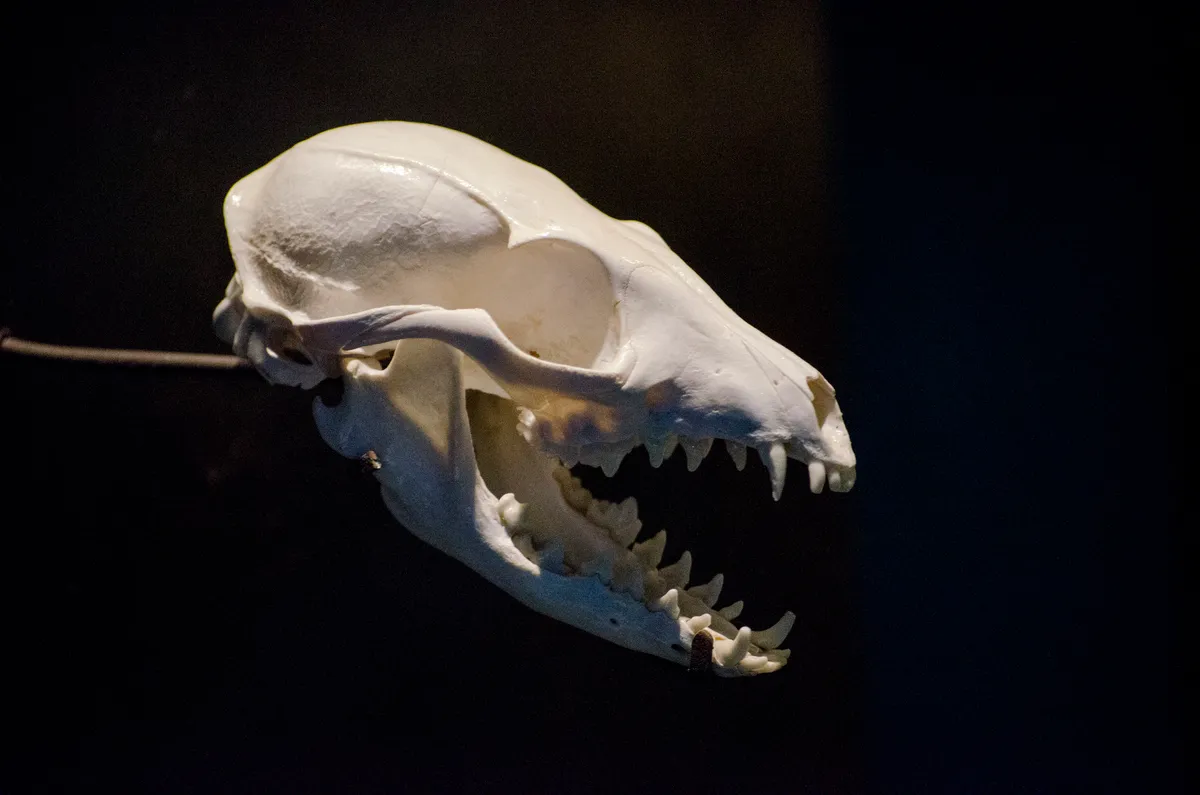
The small mustelids have similar, long flat skulls.
They increase in size from a weasel skull (the skull can pass through a wedding ring), to stoat, mink, polecat, pine marten and otter skulls (the last of these is about 10cm long).
Males are larger than females; there is considerable overlap in size between species.
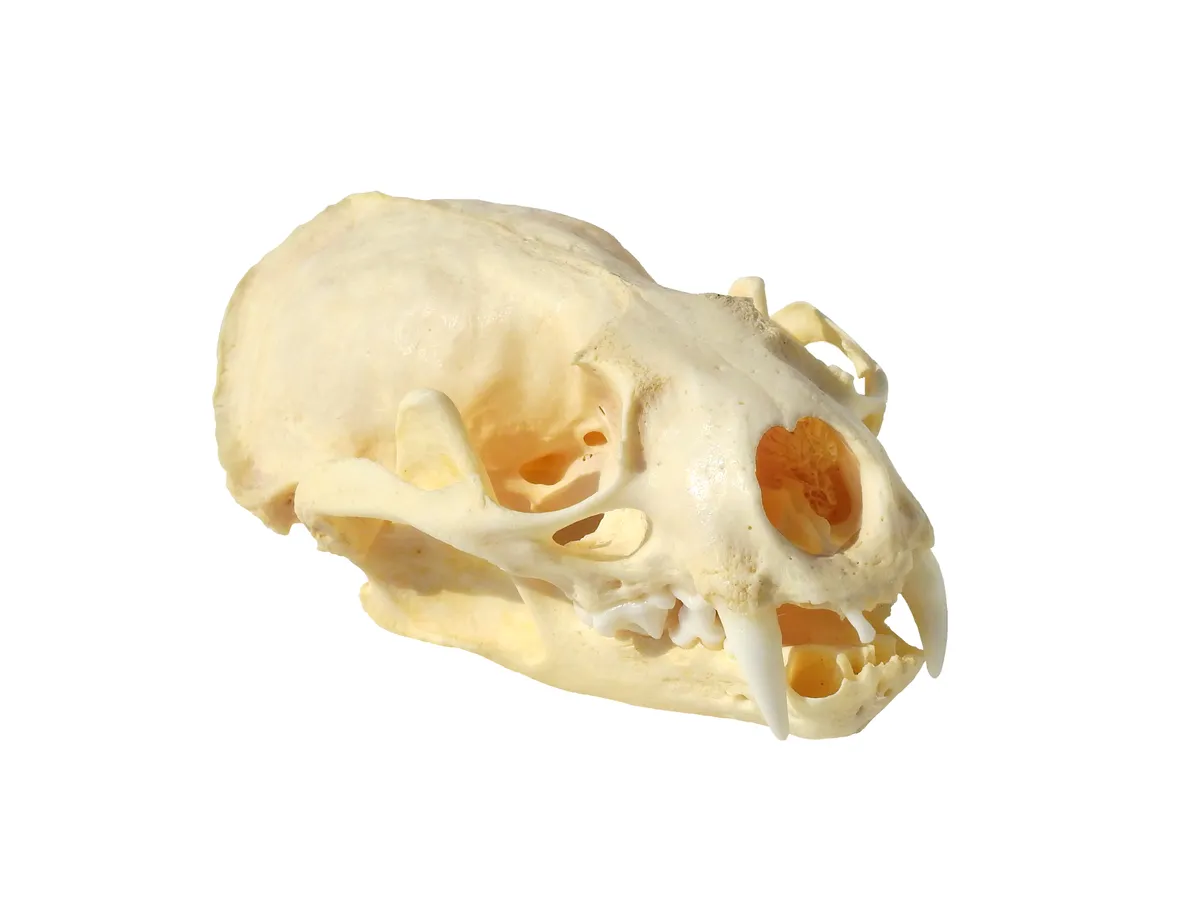
Hare and rabbit skulls
Rabbit skulls and hare skulls are easily distinguished from rodents by a second pair of small upper incisors behind a larger pair.
The cheekbones are parallel, and you’ll see blunt oval surfaces on the cheek teeth.
Hare skull slightly larger than rabbit skull with much wider nasal passages.
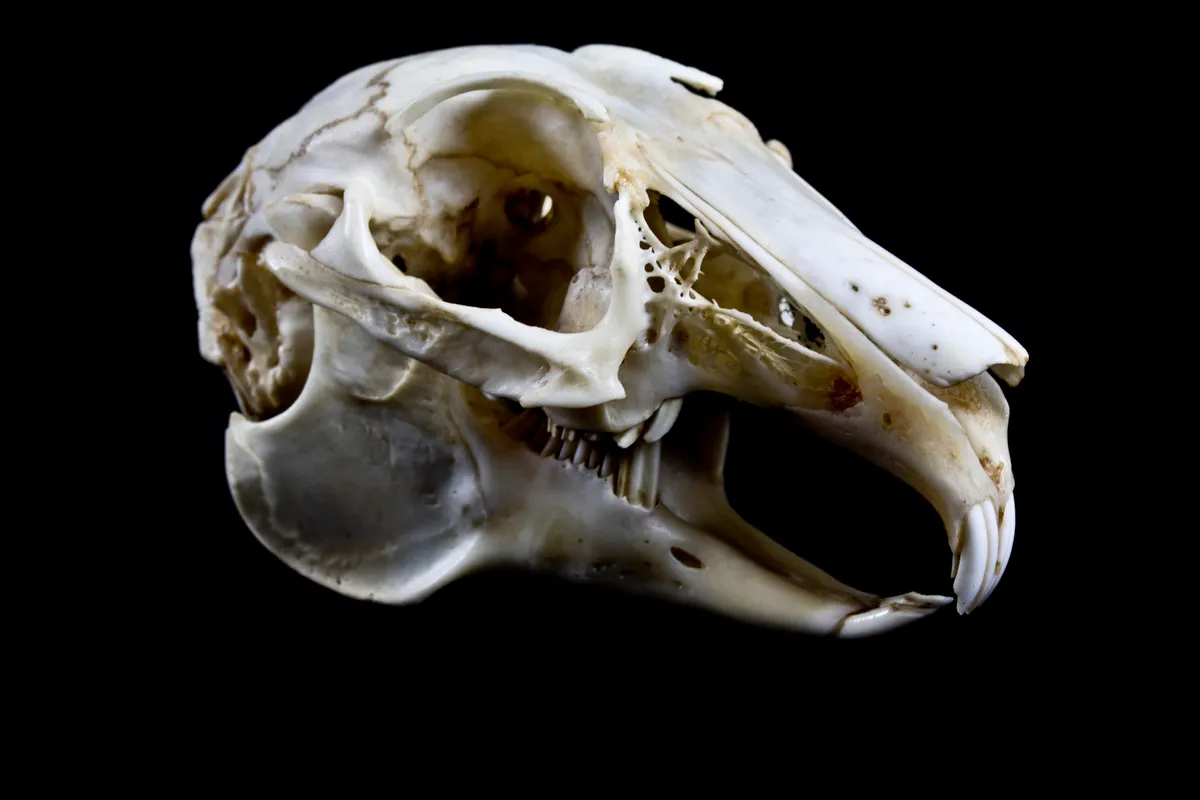
Large carnivore skulls
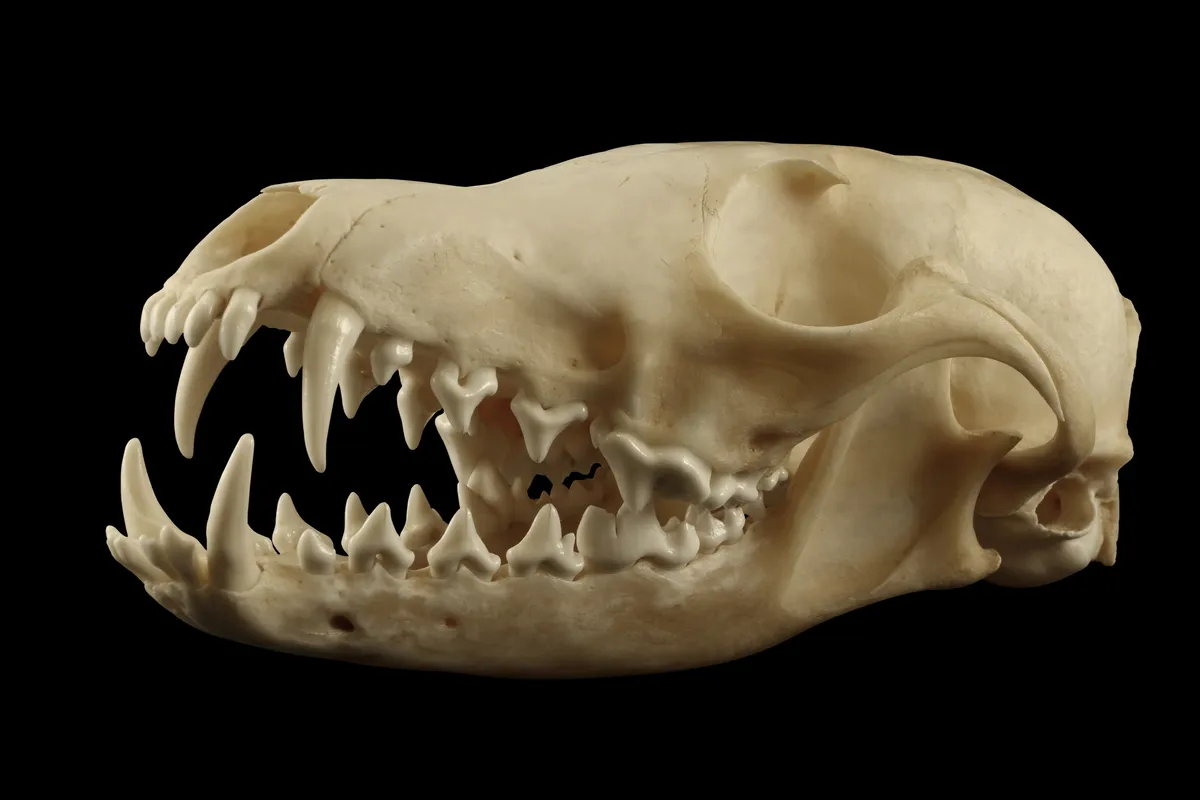
Carnivores have large, obvious canines, and the rear teeth have a number of small, sharp points or cusps.
Adult badgers have relatively short canines, a crest along the top of the skull and the lower jaw cannot be detached; badger skulls less than a year old have no crest and the lower jaw is not attached to the skull.
Fox skulls can be identified by their slender, sharp canines and long, narrow snout. The skull is 8–11cm long, quite elongated and has huge eye sockets with concave pits above them.
Cats have a very short snout and typically only three or four teeth behind the canines.
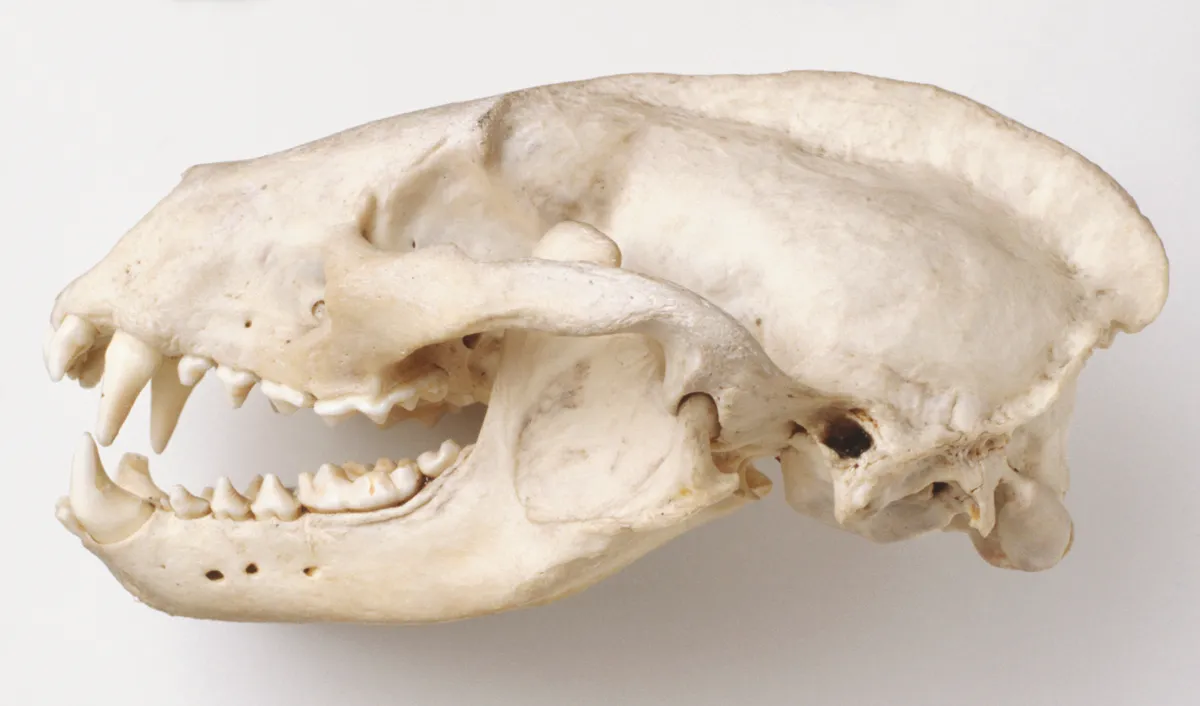
Deer skulls
Deer skulls have no upper incisors; the cheek teeth are all very similar and designed for grinding.
Male deer skulls are easily recognised by antlers; if antlers are not present, the short, upwardly directed pedicel is cut flat and points backward. With sheep, the horn boss, or boney growth, is pointed and tapered and curves backward and downward.
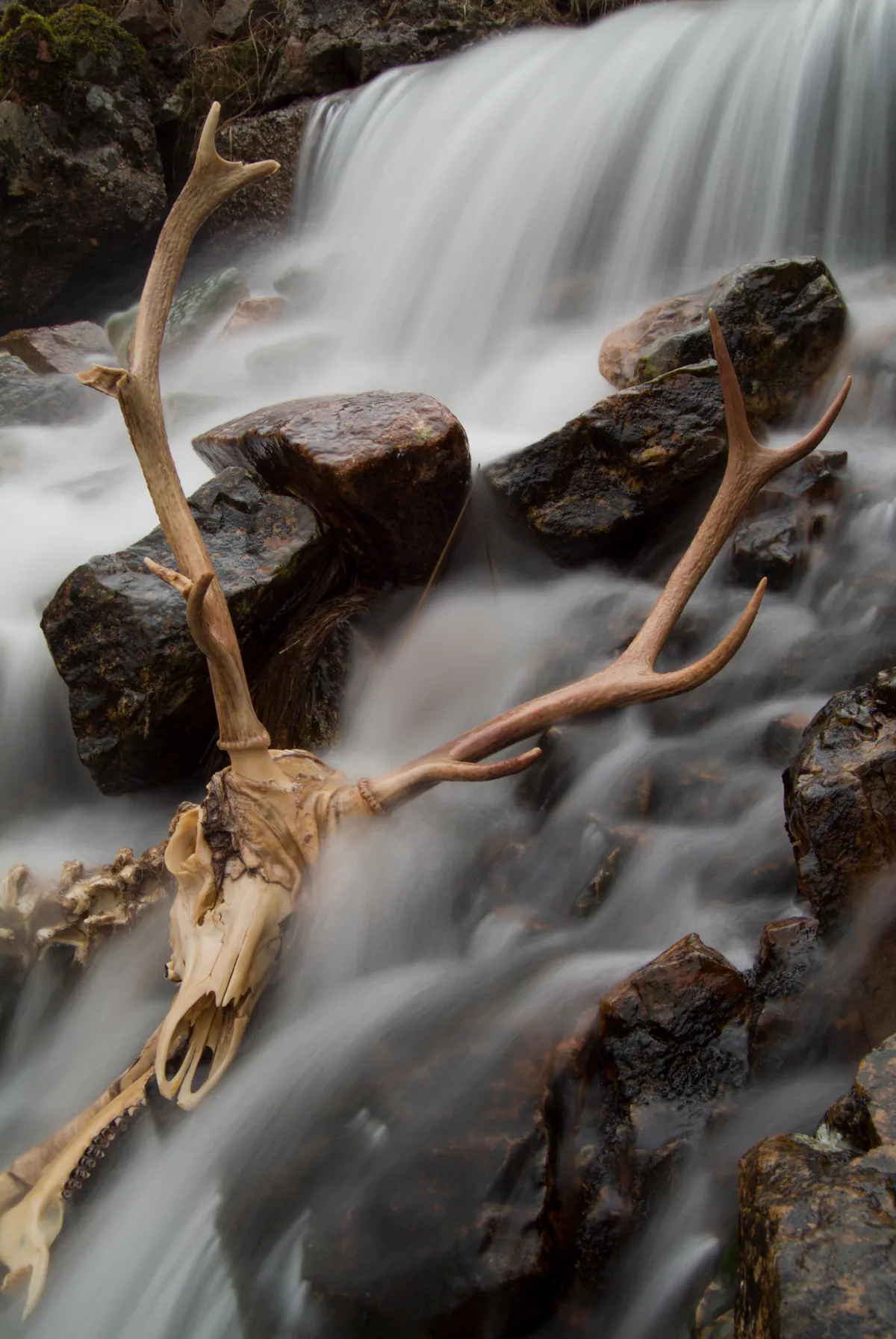
Male Chinese water deer have large canine tusks but no antlers; the muntjac is the only species where males have both tusks and antlers.
Red deer and sika deer have small rounded canines in the upper jaw.
Female Chinese water deer and muntjac skulls are told by their small size; red and sika deer skulls by their large dimensions. Female fallow and large roe deer skulls can be confused with female sheep skulls.